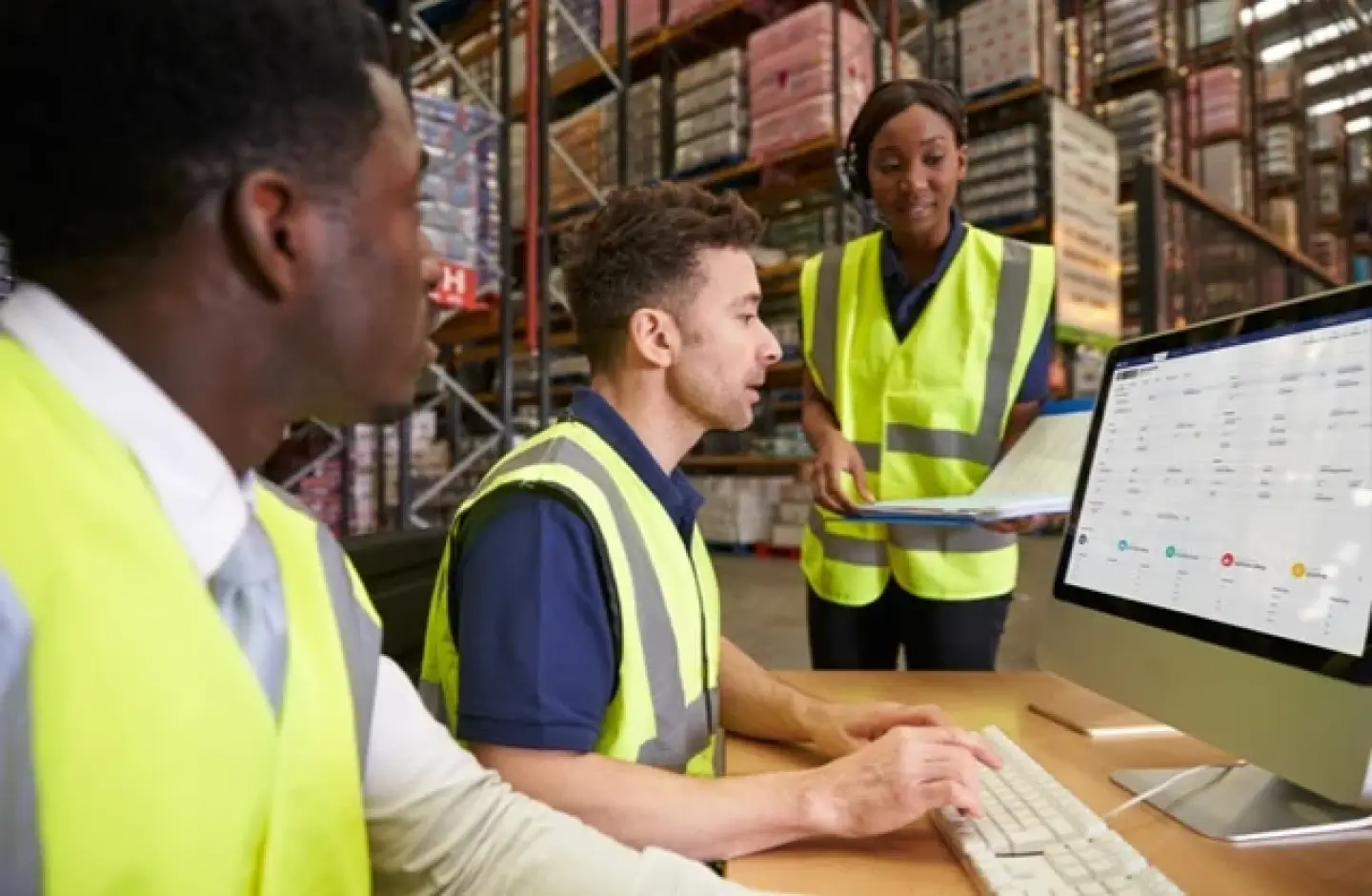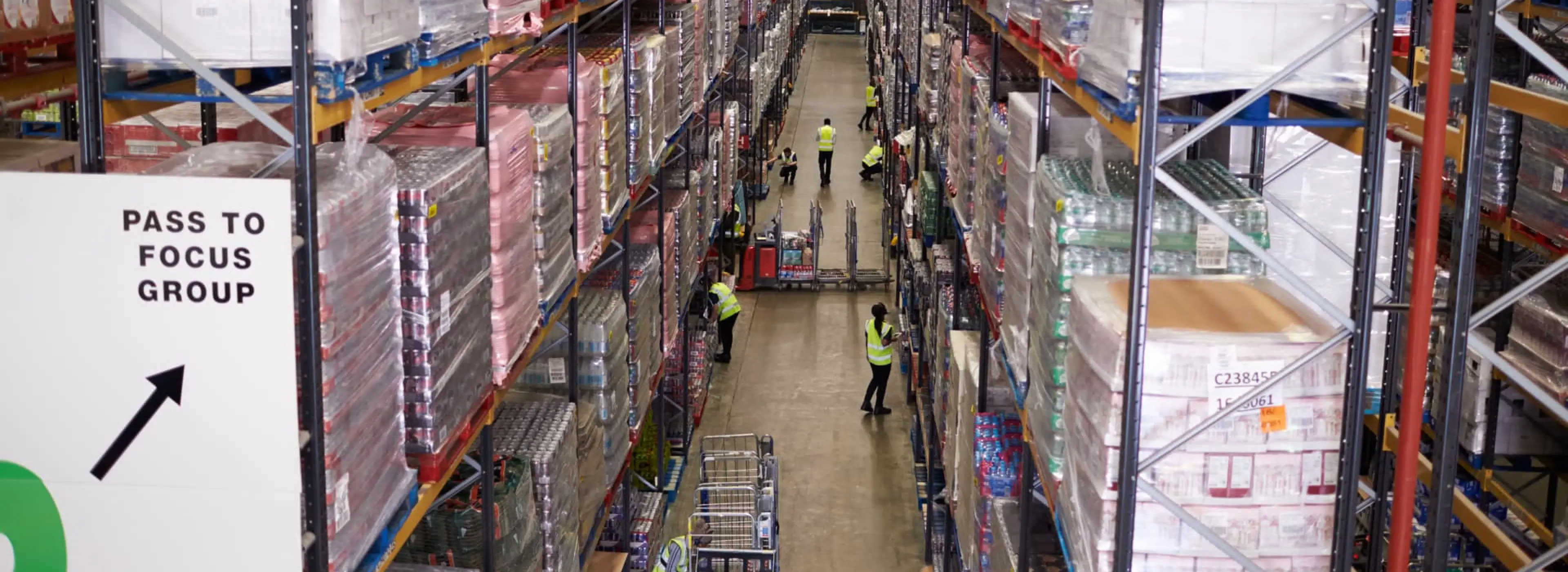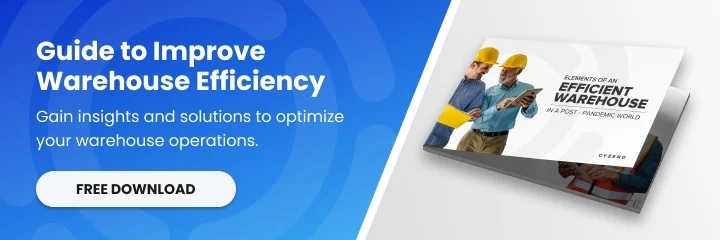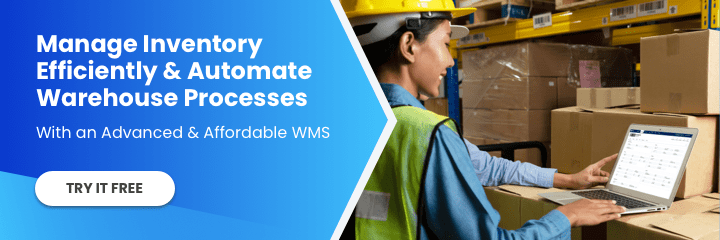Effective 3PL warehouse management is essential for businesses to meet customer demands, reduce costs, and enhance productivity. However, navigating the complexities of handling inventory, order processing, and fulfillment can be challenging.
Click Here: Streamline Warehouse Operations Using This Advanced and Affordable WMS
In this blog, we will guide you through the maze of 3PL warehouse management. From inventory and order management to warehouse layout and technology integration, we will provide best practices for eliminating inefficiencies, reducing errors, and improving overall customer satisfaction. Let’s start with the basics.
Understanding 3PL Warehouse Management
3PL warehouse management refers to the outsourcing of logistics services to a third-party provider. These providers specialize in managing and operating warehouses, handling inventory, order fulfillment, and distribution. By partnering with a 3PL provider, businesses can focus on their core competencies while leaving the complexities of warehouse management to the experts.
Effective 3PL warehouse management involves seamlessly integrating various processes, such as receiving and storing inventory, picking and packing orders, and shipping and tracking shipments. It requires a robust system and skilled workforce to ensure smooth operations and timely delivery.

The Importance of Streamlined Warehouse Management
Streamlined warehouse management enables efficient inventory management, accurate order processing, and timely fulfillment. By streamlining warehouse operations, 3PLs can reduce costs, minimize errors, and improve customer satisfaction.
Efficient warehouse management allows 3PLs to optimize space utilization, ensuring that every inch of the warehouse is utilized effectively. It also enables them to track inventory in real time, reducing the risk of stockouts or overstocking. With streamlined warehouse management, 3PLs can meet customer demands promptly, leading to increased customer loyalty and repeat business.
Challenges in 3PL Warehouse Management
3PL businesses often face several challenges in implementing and maintaining efficient warehouse operations. Some common challenges include:
- Inventory Accuracy: Maintaining accurate inventory records can be challenging, especially when dealing with a large volume of SKUs and frequent inventory movements. Inaccurate inventory records can lead to stockouts, delayed shipments, and dissatisfied customers.
- Order Fulfillment Speed: Meeting customer expectations for fast and accurate order fulfillment can be challenging, especially during peak seasons or when handling a high volume of orders. Delays in order processing and fulfillment can result in negative customer experiences and lost sales opportunities.
- Warehouse Layout Optimization: Poor warehouse layout can lead to inefficient use of space, increased travel time for workers, and longer order fulfillment cycles. Optimizing the warehouse layout can significantly improve operational efficiency and reduce costs.
- Technology Integration: Integrating various technology systems, such as warehouse management systems (WMS), order management systems (OMS), transportation management systems (TMS), and customer relationship management (CRM) systems, can be complex. Lack of seamless integration can result in data discrepancies, communication gaps, and operational inefficiencies.
Solution to Efficient 3PL Warehouse Management – WMS
A warehouse management system (WMS) is a software solution specifically designed to optimize warehouse operations. It automates various processes, provides real-time visibility into inventory, and improves overall efficiency. Implementing a WMS can revolutionize 3PL warehouse management and unlock numerous benefits.
A WMS offers inventory tracking, order management, labor management, and reporting and analytics. It enables businesses to track inventory movements, monitor order statuses, optimize labor allocation, and generate insightful reports for data-driven decision-making.
When implementing a WMS, businesses should consider their specific requirements, such as integration capabilities, scalability, and ease of use. It’s essential to choose a WMS that aligns with the business’s goals and supports future growth.
Choosing the Right 3PL Warehouse Management Software
When selecting a 3PL warehouse management software, businesses should consider the following factors:
- Functionality: Assess the WMS features and capabilities to ensure they align with the business’s specific needs. Look for features such as inventory management, order processing, reporting and analytics, and integration capabilities.
- Scalability: Choose a software solution that can scale with the business’s growth. It should handle increasing order volumes, inventory levels, and warehouse operations without compromising performance.
- Usability: The software should be user-friendly and intuitive, allowing warehouse staff to quickly adapt to the new system. A complex and difficult-to-use software can lead to resistance and hinder the adoption process.
- Support and Training: Ensure that the software provider offers comprehensive WMS support and training to assist with the implementation and ongoing usage of the software. Prompt technical support and regular software updates are also essential.
By carefully evaluating these factors, businesses can select the right 3PL warehouse management software that meets their requirements and drives operational excellence.

Benefits of a WMS In 3PL Operations
Implementing a WMS in 3PL operations brings several benefits. Some of the key advantages include:
- Improved Inventory Accuracy: A WMS provides real-time visibility into inventory levels, locations, and movements. It reduces the risk of stockouts, overstocking, and inaccuracies in inventory records, leading to improved inventory accuracy and reduced carrying costs.
- Enhanced Order Fulfillment Speed: With a WMS, businesses can automate order processing, optimize picking routes, and streamline packing and shipping processes. This leads to faster order fulfillment and improved customer satisfaction.
- Increased Operational Efficiency: A WMS automates various manual processes, reduces paperwork, and eliminates redundant tasks. It improves overall operational efficiency by minimizing errors, reducing labor costs, and maximizing resource utilization.
- Better Customer Service: By optimizing warehouse operations and improving order fulfillment speed, businesses can provide faster and more accurate deliveries to customers. This leads to improved customer satisfaction and loyalty.
Best Practices for Efficient 3PL Warehouse Management
To achieve efficient warehouse management, 3PLs should adopt the following best practices:
- Establish Clear Processes: Clearly define and document standard operating procedures (SOPs) for warehouse processes, such as receiving, put-away, picking, packing, and shipping. This ensures consistency and reduces errors.
- Regularly Train Employees: Provide comprehensive training to warehouse staff on SOPs, equipment operation, and safety protocols. Regular training sessions help employees stay updated and perform their tasks efficiently.
- Utilize Automation and Technology: Leverage automation technologies, such as barcode scanning, RFID, and automated picking systems, to improve accuracy and efficiency. Implementing a WMS and integrating it with other systems also enhances overall operational efficiency.
- Implement Performance Metrics: Define key performance indicators (KPIs) to measure warehouse performance. Monitor metrics such as order accuracy, order fulfillment time, inventory accuracy, and labor productivity to identify areas for improvement.
What is the Difference Between 3PL and 4PL in Warehouse Management?
Businesses seeking to optimize their supply chains often turn to logistics providers for assistance. Understanding the distinctions between 3PL (third-party logistics) and 4PL (fourth-party logistics) is crucial when deciding to outsource warehouse management and other supply chain functions.
Think of a 3PL provider as your operational partner. They handle the day-to-day execution of logistics functions like warehousing, inventory management, order picking and packing, as well as shipping and transportation. 3PLs typically own and operate their own assets, such as warehouses and transportation fleets, and you work directly with them to manage your logistics operations.
A 4PL provider takes on the role of a strategic orchestrator for your entire supply chain. They don’t directly handle the physical operations. Instead, they focus on optimizing your network of 3PLs and other providers, integrating technology for data analysis, and handling long-term supply chain planning and design. 4PLs typically don’t own physical assets; their value lies in their expertise and technology capabilities. With a 4PL, you have a single point of contact managing other providers (often including 3PLs) on your behalf.
So, when should you choose a 3PL versus a 4PL? A 3PL is ideal when you need help executing specific logistics functions and want to reduce the burden of managing in-house operations. A 4PL is a better fit when you have a complex, multi-provider supply chain, want to optimize efficiency with data-driven insights, and lack the internal resources for strategic supply chain management.
Remember, the lines between 3PL and 4PL can sometimes blur. Some large 3PLs offer 4PL-like services, and partnerships can evolve over time. The most important thing is finding the provider model that best fits your business’s current and future needs.
Conclusion: Streamlining Your 3PL Warehouse Management for Success
Efficient and streamlined 3PL warehouse management is the key to meeting customer demands, reducing costs, and enhancing overall productivity. By implementing the right tools, strategies, and technology, businesses can revolutionize their operations and stay ahead of the competition.
Each component plays a crucial role in achieving streamlined warehouse management, from inventory and order management to warehouse layout optimization and technology integration. By following best practices and leveraging the right WMS, 3PLs can unlock the secrets to success.
For more information about streamlining warehouse operations or the latest warehouse technology trends, you can follow us on LinkedIn, YouTube, X, or Facebook. If you have other inquiries or suggestions, please contact us here. We’ll be happy to hear from you.












